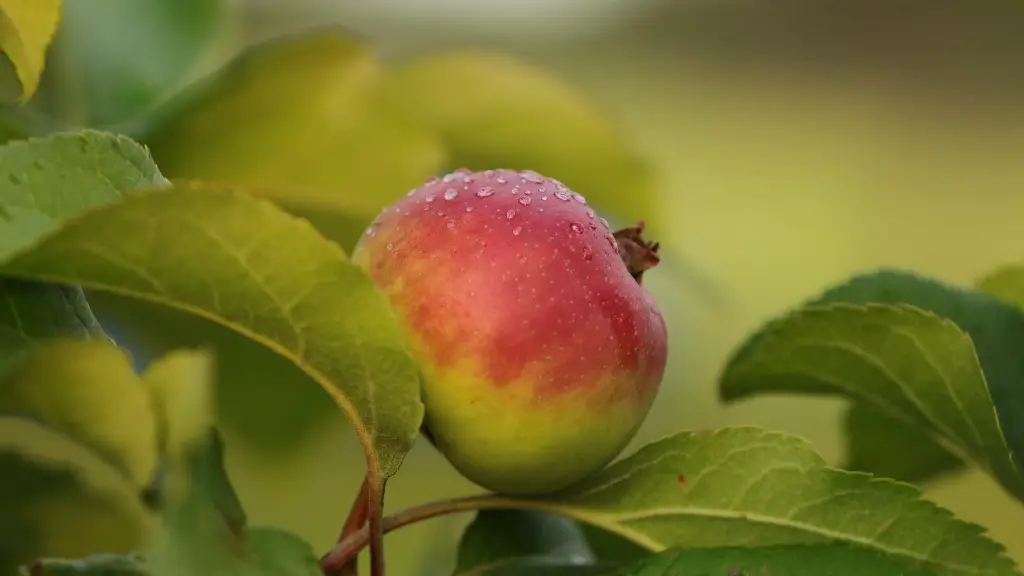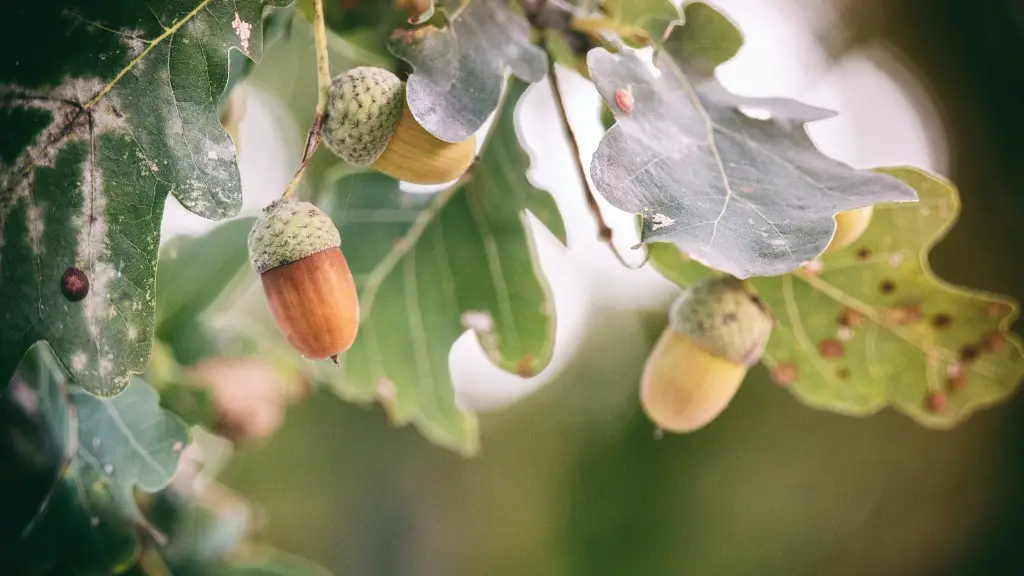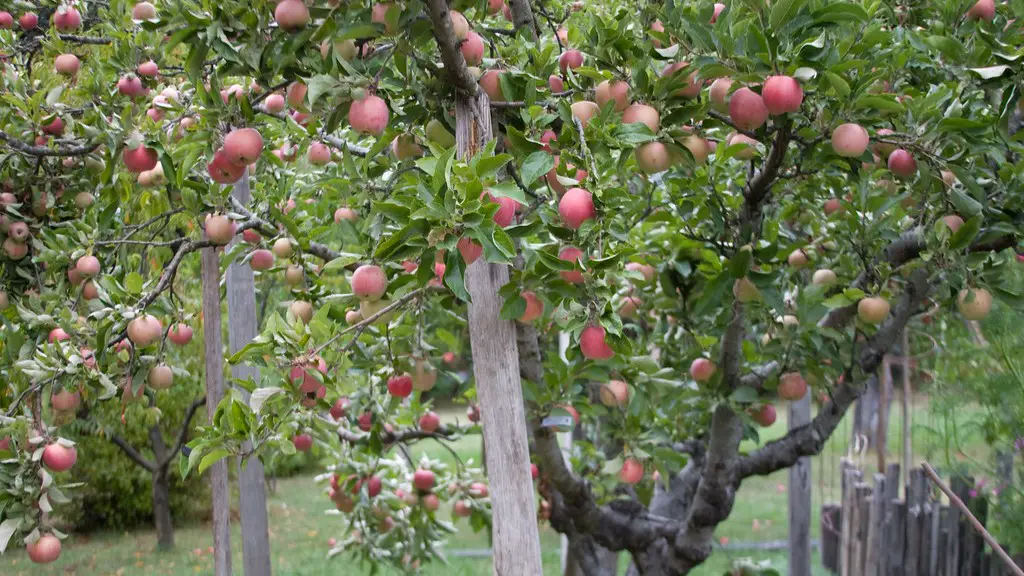the Basics of Growing an Avocado Tree from a Pit
Avocados are a delicious and nutritious snack, and they are much more than just that. It’s also possible to grow an avocado tree right from the pit of an avocado – a fun and educational project for any garden enthusiast. Growing an avocado tree does require patience and some basic knowledge, but with the right approach the results can be very rewarding.
To begin, you will need to extract the pit from the ripe avocado. This should be done cautiously – the pit is intentionally difficult to remove, so care should be taken to avoid damaging it in the process. Start by slicing the avocado in half and gently remove the pit. Try to leave as much of the brown avocado flesh still attached to the pit.
Once you have the pit, the next step is to remove the brown skin. This can usually be done by simply rubbing the skin off with a cloth. Then, the pit should be washed in a warm soapy solution. This will help to remove all of the avocado oils, which may otherwise inhibit growth. After the pit has been washed and dried, it is ready for planting.
To get the best results, choose a pot with plenty of room for the pit to grow and develop. Fill the pot with good quality potting soil and make sure that it is evenly moist. Place the pit, vertically, in the soil, with the pointy end pointing upwards. Cover the pit with a thin layer of soil and bury it until only one third of the pit is exposed. Once the pit is planted, place it in a warm, sunny spot and water it regularly into the soil.
It is important to note that germination and growth of the avocado tree may take some time. Depending on the variety and growing conditions, it can take up to six months before the pit starts to germinate. Once the pit begins to produce growth, it is a good idea to prune the lower branches in order to encourage a healthier canopy. Keep in mind that although the tree might look healthy, it may take several years before it is able to produce fruit.
Understanding the Variety of Avocado Trees
Avocado trees come in several different varieties, ranging from dwarf trees, to those that can grow to a height of over 60 feet (18.3 meters). The type of tree that is grown from a pit is typically a variety known as a “cold-hardy Mexican.” These trees are able to withstand cold temperatures better than other varieties, so they can often be grown indoors or outdoors depending on the climate.
It is important to note that different varieties of avocado trees require different care. For example, some avocado trees require a lot of pruning in order to maintain their shape. Additionally, these trees may require specialized fertilizers and nutrients in order to ensure their health. It is important to research the variety of tree that is being grown in order to ensure that all of its needs are met.
One of the benefits of a cold-hardy Mexican avocado tree is that it is often more resilient to pests and diseases than other varieties. Additionally, since this variety is able to withstand cold temperatures, it is more likely to survive a frost or a cold snap in the winter months. This makes it much easier to maintain, and it can often produce fruit in climates where other varieties may struggle.
Keeping an Avocado Tree Healthy
Just like any other tree, an avocado tree requires regular care in order to maintain its health. This includes watering the tree regularly, pruning it when needed, and providing adequate sunlight. Additionally, the tree should be checked for signs of pests and diseases on a regular basis.
It’s also a good idea to fertilize the tree occasionally. This will help to ensure that the soil is rich in essential nutrients and will encourage the tree to produce more fruit. Additionally, some varieties of avocado trees may require specialized fertilizers in order to ensure their health. If this is the case, it is important to research what type of fertilizer is best for the particular type of tree that is being grown.
Finally, regularly monitoring the tree’s size and condition is essential. If a tree is not growing at the right rate, or if it is showing signs of stress, it is important to take action quickly. This could include thinning out branches or pruning back overly dense foliage. Proper maintenance of an avocado tree will allow it to thrive and bear fruit for many years.
Tips for Reaping a Harvest from an Avocado Tree
Harvesting avocados from an avocado tree is a rewarding experience, and it is relatively simple if the tree is given proper care. The first thing to consider is the variety of tree that is being grown. Certain varieties of avocado will require hand pollination in order to set fruit. If this is the case, it’s important to research how to safely pollinate an avocado tree.
Fertilizing an avocado tree regularly will also help to ensure a healthy crop. This is especially true if the tree is not given enough sunlight. Additionally, avocado trees are prone to pests and diseases, so a regular pest control routine should be established to keep the tree healthy.
Finally, it’s important to check the tree regularly for signs of ripeness. Avocados can ripen on or off the tree, so periodic inspections are necessary to determine when the fruit is ready to be harvested. Typically, avocados will turn a darker shade of green when they are ripe and ready for picking.
Potential Difficulties with Growing an Avocado Tree
Growing an avocado tree from a pit can be a rewarding experience with the right approach. However, there are some potential difficulties that should be taken into account. In order for trees to produce fruit, they need adequate sunlight and water. They also need to be protected from extreme temperatures and pests and diseases. If any of these needs are neglected, the tree may not be able to bear fruit.
Additionally, it is important to note that certain varieties of avocado need to be hand pollinated in order to set fruit. For those without experience in hand pollination, it is best to do some research beforehand to ensure that it is done correctly. If pollination is done incorrectly, the tree may not set fruit.
Avocado trees can also be slow to bear fruit, and some have been known to take several years before they produce. Additionally, the trees themselves can take some time to mature, so patience is essential when growing an avocado tree.
What to do with a Harvested Avocado
Once an avocado tree has successfully borne fruit, it’s time to figure out what to do with it. Avocados can be used in a variety of ways, but the most common way is to simply eat them fresh. Avocados can be sliced and added to salads, sandwiches, omelets or tacos. Alternatively, they can be mashed and used as a spread or dip.
Avocados can also be used to make guacamole – a popular dip that is prepared by blending together mashed avocado, onions, garlic, tomatoes, lime juice and cilantro. Additionally, avocados can be pureed and used as an ingredient for smoothies, soups and other recipes. The possibilities are endless.
Finally, avocados can also be frozen and stored for later use. To freeze avocados, simply slice them up and store them in an airtight container. Frozen avocados can then be used for cooking or baking anytime, with no need to thaw them out beforehand.
Selecting the Best Avocado for the Harvest
One of the most important considerations when harvesting avocado is to select the right variety. While it may be tempting to pick the large, ripe avocados, they are usually too mature and usually contain less flavor. Smaller, greener avocados generally have a sweeter flavor, so they are usually the best option.
Additionally, it’s important to inspect the avocado for signs of insect damage or decay. If a brown patch or an insect is found, that area should be removed before the fruit is eaten. Finally, if an avocado is too ripe, it is best to refrigerate it to prevent it from becoming too mushy.
Storing and Preserving an Avocado Harvest
Once an avocado harvest is gathered, it’s important to store the fruit in a way that preserves its flavor and texture. Ripe avocados should be stored in the refrigerator, where they will remain good for up to a week. Unripe avocados should be stored in a paper bag on the counter, where they will slowly ripen. If they are stored in the refrigerator, they will remain unripe and will eventually rot.
If an avocado is overly ripe, it should be thrown out. Otherwise, it can be frozen for later use. To freeze avocados, it is important to remove the flesh of the fruit and purée it with a blender. Then, it can be placed in an airtight container and stored in the freezer for later use.
Finally, mashed or puréed avocados can also be preserved by adding a bit of lemon or lime juice. This will help to keep the avocado from discoloring and will also add extra flavor. However, it is important to only add a small amount of citrus juice, as it can make the avocado very acidic.




